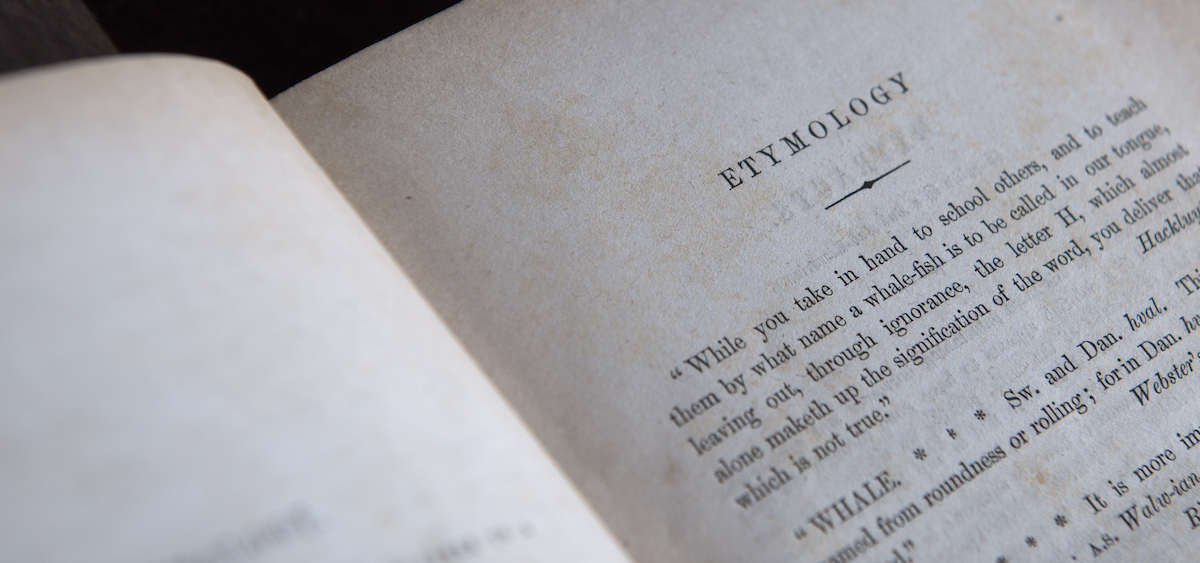Culture

OU Libraries’ Rare Books Used for “Moby Dick” Research
By: Malika Bryant
Posted on:
Moby Dick (1851), a novel written by Herman Melville, is celebrated as one of the greatest American novels of the 19th century.
Kevin Haworth, author and assistant professor in Ohio University’s Honors Tutorial College, has formulated some interesting observations about Moby Dick using the multiple editions of the texts that are available at Ohio University Libraries’ Mahn Center for Archives and Special Collections.
Moby Dick is regarded as an epic sea adventure. The story is told through the narration of Ishmael, a sailor who joins the crew of a whaling ship. Throughout the story, the reader is introduced to characters like Captain Ahab, who is determined to find and kill the great white whale, called Moby Dick, which caused him to lose his leg on a previous voyage.
The tale, which did not rise in popularity until the 20th century, has been re-released in hundreds of editions worldwide since 1851.
In two articles published online by the Michigan Quarterly Review, an interdisciplinary arts and culture journal that includes poetry, essays, fiction and creative nonfiction, Haworth assessed some of his most pertinent findings.
In Haworth’s first article titled, “Moby-Dick, or, The Pop-up Whale,” he examines how factors such as illustrations, font, the book cover and the addition of chapters, which vary according to the edition, can change how one experiences the story of Moby Dick.
In one example, Haworth reflects on the “well-worn” 1967 Norton Critical Edition of Moby Dick, which can be found in the stacks of Alden Library.
The handwritten notes throughout the text pique an observant Haworth’s curiosity. He describes his experience reading the penciled-in notes along with Melville’s original text. Haworth says the handwritten “underlines and commentary give us yet another version of the text,” which allowed him to “travel with Ishmael through the eyes of a student with an active pencil and an honest streak.”
In “The Mysterious Hebrew Whale,” Haworth explores “Etymology,” one of the opening chapters of Moby Dick, and its inaccuracies in the Hebrew renderings of the word “whale.” By including the various versions of Hebrew that appear in the editions of Moby Dick in the article, Haworth shows how the use of one Hebrew letter over another can completely change the meaning of a word.
“There are eleven different editions of Moby Dick scattered throughout the rare book collection,” including the 2007 pop-up book Haworth referenced in the title of his first article, said Miriam Intrator, special collections librarian.
The texts in the Mahn Center range from an “an eight-page excerpt entitled, ‘The Town Ho’s Story,’ originally published in Harper’s Monthly in October 1851, to a 1930 edition illustrated by Rockwell Kent, to an oversize University of California Press limited edition from 1981. We [the Libraries] also have the first American edition from 1851,” said Intrator.
The multiple editions of Moby Dick that are visually and textually differentiated by unique characteristics are just a few examples of the types of rare and special books available in the Mahn Center.
Republished with permission from Ohio University Libraries.

